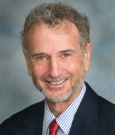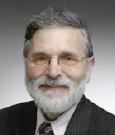On September 11, 2001, the devastating terrorist attack that destroyed the World Trade Center left in its wake a unique toxic site in both mass and quantity of hazardous materials. It took 9 months to remove approximately 2 million tons of wreckage from Ground Zero, during which thousands of emergency personnel and inhabitants of the area were exposed to a dizzying array of toxins, some of which were known carcinogens.
Now, more than a decade later, 9/11-related diseases, including cancers, are being reported and studied to better understand the effects of this noxious exposure on health. Helping those who were made sick by their service at Ground Zero is a national imperative. Yet, determining the etiology of diseases related to environmental exposure is also a public health issue, and must be handled and reported with exacting scientific rigor.
Media Attention
That said, regarding cancers, well-intended sentiment is running ahead of the scientific process. For instance, a New York Post article reported that the number of cancer cases among 9/11 responders had more than doubled in the past year.1 The piece cited a 63-year-old retired New York City Fire Department captain who worked at Ground Zero; he received a $1.5 million award from the federal 9/11 Victim Compensation Fund for lung disease and pancreatic cancer. But since more than 80% of pancreatic cancers are diagnosed between the ages of 60 and 80,2 linking a 63-year-old’s pancreatic cancer to 9/11 exposures is risky science, at best.
Donald A. Berry, PhD, Professor of Biostatistics at The University of Texas MD Anderson Cancer Center, Houston, told The ASCO Post, “The reaction of patients is understandable. People want to explain their cancers. They want to attribute a cause, and not one involving some esoteric random mutation occurring in one of the body’s cells.”
Dr. Berry continued, “The recent media attention seems to be a reaction to the continuing reports of cancer among 9/11 workers. The question is whether the incidence of cancer among the workers is greater than it would be had 9/11 not occurred. I sympathize with the unfortunate people exposed to [the toxins created by] 9/11 who got cancer, just as I do with all cancer patients. But their cancers are about as likely to have been caused by 9/11 as were the cancers of Nebraskans who watched the aftermath of 9/11 on television.”
Federal and State Response
In response to potential health issues associated with 9/11 exposure, President Obama signed into law the James Zadroga 9/11 Health and Compensation Act of 2011, which established the World Trade Center (WTC) Health Program. The Director of the National Institute for Occupational Safety and Health (NIOSH) administers the WTC Health Program, which is paid for by the federal government and New York City.
A representative from the WTC Health Program explained the complicated process to The ASCO Post: “The WTC Health Program providers—Mount Sinai Hospital is one of our clinical centers—make a determination based on a clinical evaluation of a member’s specific exposure situation and the type of health condition they have developed (the diagnosis) as to whether or not the condition was likely a result of their exposures from the WTC disaster and response. Then the WTC Health Program must approve (certify) the evaluation and diagnosis to permit a member to receive treatment for the specific health condition through a Clinical Center of Excellence or the Nationwide Provider Network at no cost to the member.”
In 2012, the Associated Press reported that, “After months of study, the National Institute for Occupational Safety and Health [NIOSH] said in an administrative filing that it favored a major expansion of an existing $4.3 billion 9/11 health program to include people with 50 types of cancer, covering 14 broad categories of the disease.”
Dr. Berry, concerned that NIOSH caved to political pressure and public emotion commented, “The notion that 9/11 exposures played a role in causing 50 types of cancers is beyond the pale. With the exception of a heavy dose of radiation, it is difficult for any single event to cause cancer. Moreover, causes of cancer and factors that promote cancer growth are limited in their effects to a small number of cancers. This is true even for smoking, which is implicated in at most a dozen types of cancer.
Amassing the Data
Roberto Lucchini, MD, Professor of Preventive Medicine, Director of Occupational Medicine, and Director of the WTC Health Program Data Center at Mount Sinai Hospital, told The ASCO Post that he doubted the reported doubling of 9/11-related cases in a year. “It’s a complicated issue, but in modern society we cannot hide behind complexity; we must answer all questions that are vital to public health. That said, given our data, it is too early in latency time to determine a causal relation between 9/11 toxic exposure and cancers,” said Dr. Lucchini.
Dr. Lucchini said that analysis of available data that they published in 2010 showed a 20% increase in the rate between observed and expected cancer among those exposed to 9/11 toxins. He pointed out, however, that numbers in themselves are interesting, but they have to be put in the proper context. For example, epidemiologists expect the number of observed cancers to increase simply because cancer is an age-related disease, increasing everyone’s risk as time passes.
Dr. Lucchini and his colleagues are in the process of updating their data. “This is a long process. We used self-reported surveys filled out by exposed people who developed cancer. Unfortunately, it is challenging to conduct yearly follow-ups among such a large, heterogeneous population. We access cancer registries from states across the country and match that data against the self-reported numbers. It is a labor-intensive process,” said Dr. Lucchini, adding that he believes as years pass, “we will see a further increase in 9/11-related cancers.”
Dr. Lucchini continued, “Although we still do not have the data to definitively link exposure to 9/11 toxins and cancers…. We think about Chernobyl or Fukushima, but this is a totally different situation. We are doing as much as we can with our resources, but it will take years before conclusions are made.”
Early Findings Require Long-Term Follow-up
In 2012, JAMA published a study titled, “Association Between World Trade Center Exposure and Excess Cancer Risk.”3 To date, it remains the most cited work on this topic. The study followed 55,778 residents of New York State who were enrolled in the WTC Health Registry from 2003 to 2004. Of these, 21,850 were rescue-recovery workers and 33,928 were not involved in 9/11 rescue-recovery. All of the participants were followed from enrollment until December 2008. The researchers identified cancer cases through linkages with 11 state cancer registries.
“We focused on cancers diagnosed in 2007 to 2008 because these were most likely to be related to exposure during September 11 and its aftermath,” said study coauthor Steven D. Stellman, PhD, Research Director, World Trade Center Health Registry, New York City Department of Health and Mental Hygiene and Professor of Clinical Epidemiology, Mailman School of Public Health, Columbia University. By December 31, 2008, 1,187 new cancers had been reported in the study population. Of these, 439 cancers (37%) were diagnosed in rescue-recovery workers and 748 (63%) were diagnosed in those not involved in rescue-recovery. The median age at cancer diagnosis was 57 years.
“The goal of the study was to determine whether cancer incidence in the two groups is greater than what would be expected based on background New York State cancer rates. In both the rescue-recovery workers and the non–rescue-recovery group, we did not find any different overall cancer rate from what we determined as the background rate of the state cancer registries,” said Dr. Stellman.
“However,” he added, “in the rescue-recovery group, we found a significantly higher increased rate of three cancers—prostate, thyroid, and multiple myeloma. Although most solid tumors have a long latency period, it’s important to track these cancers as we move forward.”
Asked to comment on the JAMA study, Dr. Berry noted, “The authors highlighted three cancer types as having statistically significantly elevated rates of the 23 cancer types considered. In the context of multiple comparisons, 3 out of 23 is not unusual.”
He continued, “To reinforce the notion that the results are random, the three types—prostate, thyroid, and multiple myeloma—were unrelated, and it’s difficult to imagine a cause that would affect these three and not others. Besides, nine cancer types had a numerically lower incidence than expected. One of those was lung, a cancer that one would expect to be most susceptible to breathing all the bad substances in the air at Ground Zero.”
Conclusions
All health-care experts might agree that spending months on end working at the uniquely toxic site of Ground Zero would be deleterious to physical and mental human health. But determining a causal relationship between 9/11 exposure and specific cancers is very difficult. To that end, the oncology community is most comfortable with the randomized controlled trial, which is obviously not possible in this setting.
Therefore, we are left with epidemiologic studies comparing cancer rates in other populations, attempting to define the comparison populations to be as nearly like the population of those exposed to 9/11 toxins as possible. We know this method is imperfect, but it is all we have in this important mission. The painstaking process needs to move forward unimpeded by politics, emotion, and haste. ■
Disclosure: Drs. Berry, Lucchini, and Stellman reported no potential conflicts of interest.
Reference
1. Edelman S: 2,500 Ground Zero workers have cancer. New York Post. July 27, 2014.
2. Lillemoe KD, Yeo CJ, Cameron JL: Pancreatic cancer: State-of-the-art care. CA Cancer J Clin 50:241-268, 2000.
3. Li J, Cone JE, Kahn AR, et al: Association between World Trade Center exposure and excess cancer risk. JAMA 308:2479-2488, 2012.




